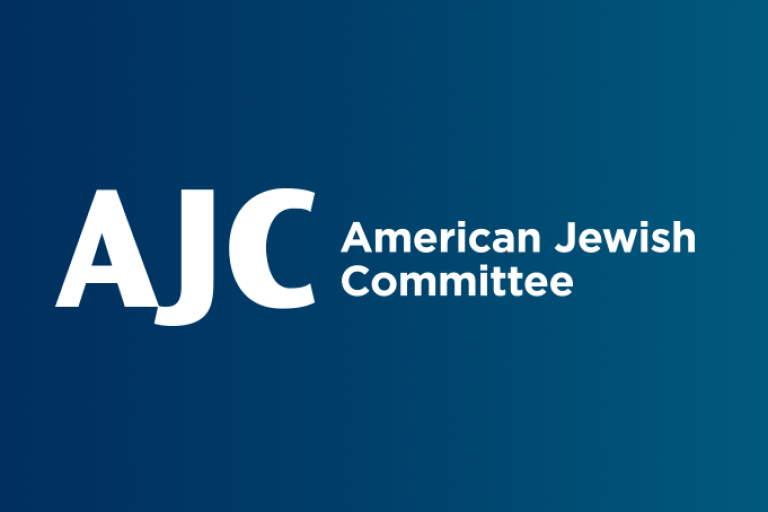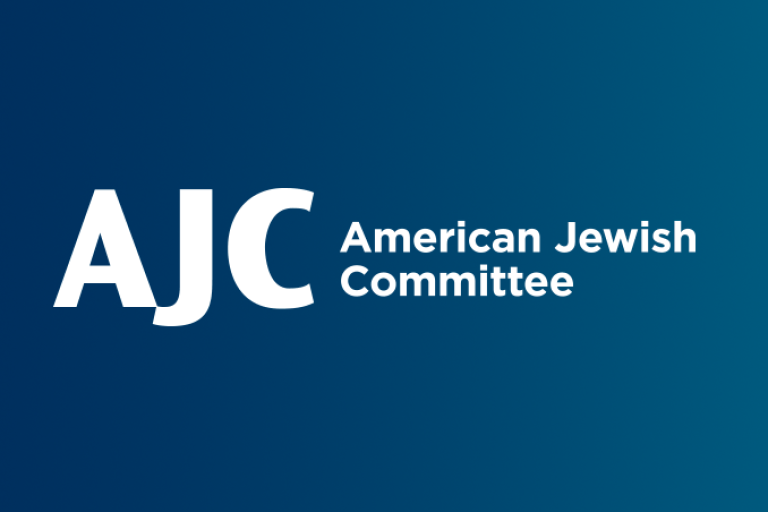September 28, 2023
This piece originally appeared in Algemeiner.
As a fifth-generation Jew living in the Kansas City metro area, I often encounter surprise from other Jewish communities when they learn that there are Jews living in this region.
Of course, if there were no Jews in Kansas City, there would have been no Eddie Jacobson, the lifelong friend of President Harry Truman, who recommended President Truman meet with Chaim Weizmann to discuss the establishment of a Jewish state.
Yes, there are Jews in Kansas City. More than that, there are Jews in Topeka, Manhattan, and Wichita — and in much smaller, more rural communities across Kansas, and the country.
Most accounts of antisemitism in the news focus on incidents in bigger cities — and these are, of course, deserving of attention and outrage. Yet antisemitism exists everywhere, from big cities to the tiniest towns.
As an organization representing all of Kansas and Western Missouri, the stories we hear at my branch of the AJC range from workplace harassment to drive-by slurs, to people proudly waving Nazi flags near schools. Many in smaller towns express that these frequent incidents are just a regular part of their experience as Jews.
Even in towns where there are no Jewish families, antisemitism remains a growing threat. This is because antisemitism doesn’t require a Jewish presence to thrive. In fact, lack of exposure to Jewish communities can leave even more room for antisemitic ideas, stereotypes, and conspiracy theories to take hold.
And while this often takes the form of far-right white nationalist antisemitism, that is not the only type of antisemitism encountered in rural America. Whether it’s religiously based antisemitism, where some churches are still teaching that Jews killed Jesus — or even problematic and biased positions on Israel, such as those promoted by some Christian churches — antisemitism in rural America can be just as multifaceted as it is in New York.
Another important point is that antisemitism that is borne anywhere doesn’t just stay in one place.
Consider my own community of Kansas City, the target of an antisemitic attack in 2014 that left three people dead. The shooter, a white supremacist from Springfield, Missouri (where Jews constitute about .1% of the metro population) drove several hours to carry out his attack.
The internet has also given extremists the unprecedented opportunity to connect with like minds, spreading their ideas and creating online communities that transcend the rural/urban divide; white nationalist extremism, for example, is now just as much an issue in suburban America as it is anywhere else.
All this to say: antisemitism in rural America is everyone’s problem.
There’s been a lot of discussion about this growing rural-urban divide. The inability of Americans to actually talk to each other, to understand each other. Rural communities, especially, feel like they don’t matter. And in some ways, extremists have done a better job than the rest of us at bridging that divide and bringing people together; unfortunately, they are doing it out of hate.
The Jewish community has been passionate about community relations for decades, investing our resources and time into creating relationships with many communities based on mutual trust and understanding — from inter-religious outreach, to working with the Black, Latino, and Asian American communities to foster greater understanding and allyship.
Yet we’ve left out large parts of this country. Americans living in rural communities constitute one fifth of our overall population. As both Americans and as Jews, we can no longer afford to ignore them.
As this country becomes increasingly polarized — and as farming communities suffer the extraordinary pressures of increasing drought, extreme heat, and weather related disasters — we must try to bridge this gap. These rising economic pressures associated with climate change will only contribute to the problem of growing antisemitism, which thrives on economic and social anxiety. Reaching out to support and build relationships with these communities is not only in our best interest, but in the best interest of our country. Whether we think about it or not, we all depend on farmers to feed our families.
There is precedent for this work. In the 1980s, during the farm crisis and far before my time, our organization noticed an increase in white Christian supremacist activity in rural Kansas, including a new radio broadcast of antisemitic and racist messaging in Dodge City, Kansas.
So we did something unique, hiring a staff member specifically to conduct outreach to farming communities. Through this project, we conducted cultural exchange efforts between Jews in Kansas City and rural farming and religious communities; advocated for national legislation to support farmers; and educated the local Jewish community about rural issues, facilitating their grassroots advocacy. Then, during the movement to liberate Soviet Jewry, these same rural organizations spread awareness of the movement in their publications, and encouraged their communities to advocate for and sponsor Soviet Jewish refugees.
It’s time to rebuild this model for the 21st century — and the opportunities are vast. The US Department of Agriculture is already proving a wonderful partner, working with AJC to train their officials and enforcement agents on antisemitism; addressing lack of kosher and halal foods in rural areas; and facilitating interfaith conversations in rural America.
And there is opportunity for so much more: how could we more intentionally connect our youth groups to their peers in farming and agricultural youth programs like 4-H or FFA?
How could we build meaningful relationships with agricultural leaders through working together on issues, such as drought and water access, that affect our entire regions? Israel is a top innovator in water and agricultural technology — how can we facilitate those connections to help solve some of the problems facing our agricultural states?
Initiatives to increase broadband access to rural communities are important, and commendable. Yet, without proactive outreach and media literacy efforts, it will also increase access to the proliferation of antisemitic conspiracy theories and extremist ideologies that exist across the internet. How can we work to mitigate these risks from the beginning?
Our community is to be commended for the way in which we have approached and invested in the important work of community relations and coalition building. Yet we are leaving a huge segment of our country on the table by not putting that same effort towards rural America. It’s time to start.



